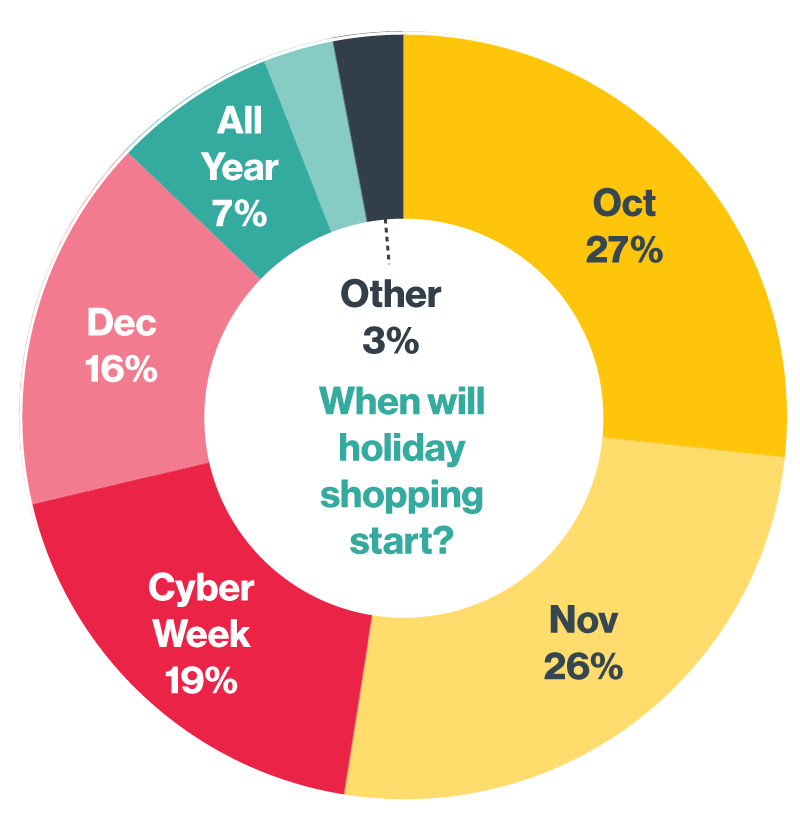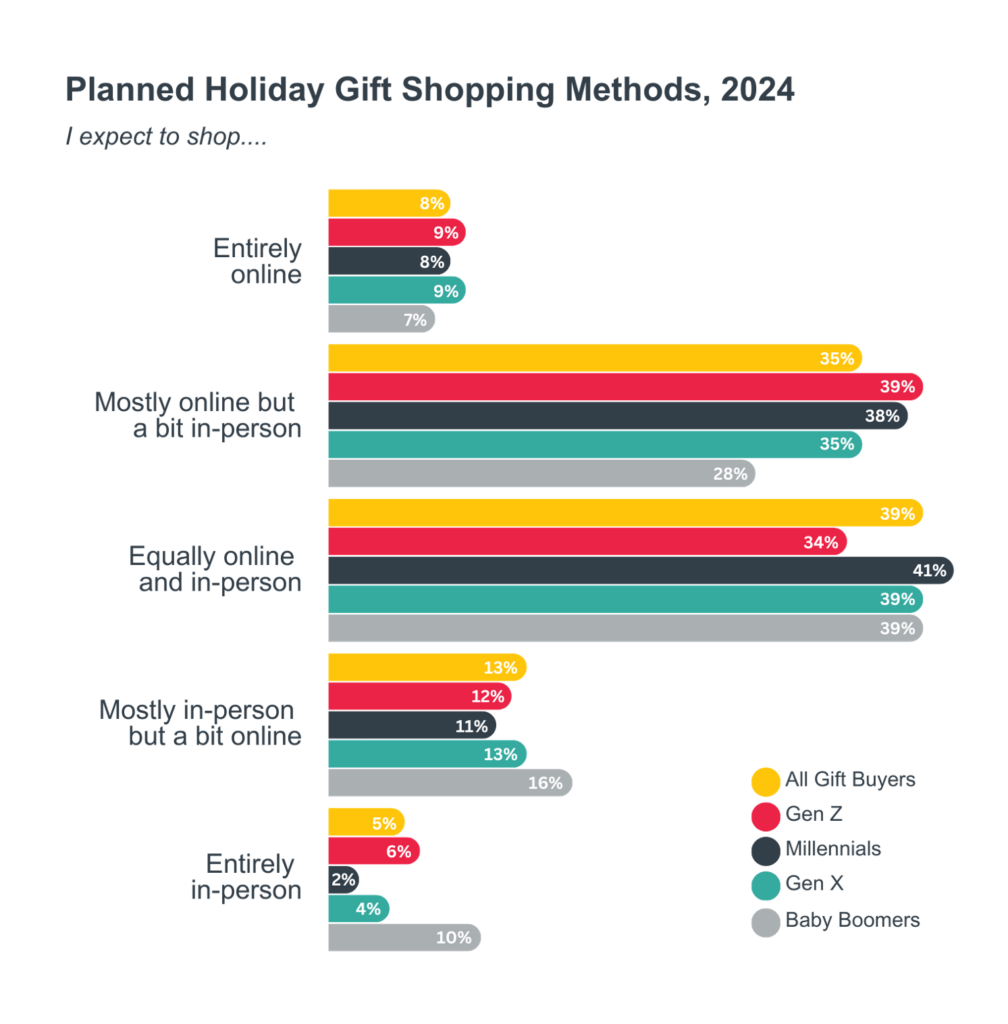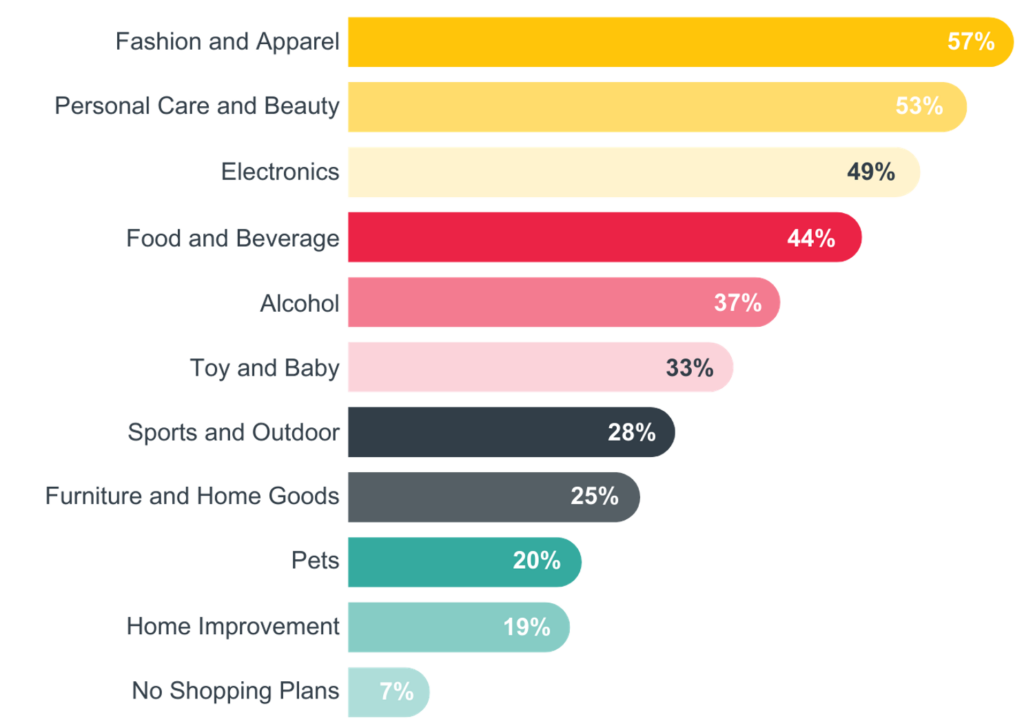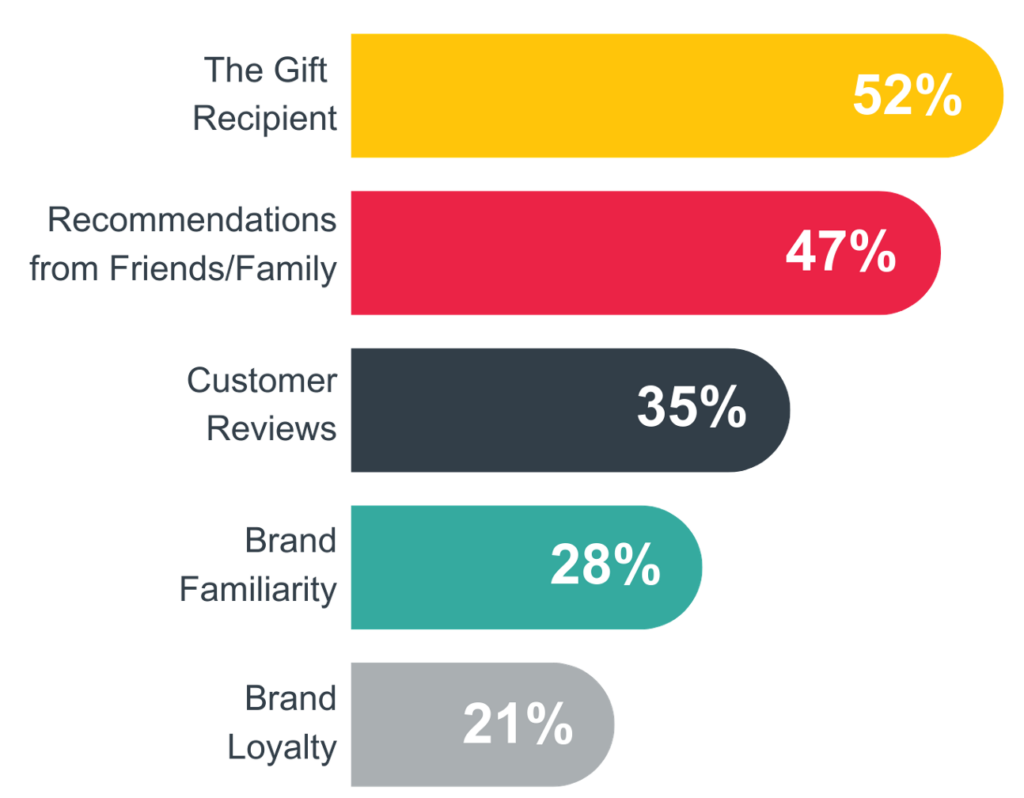By: Hope Richards, Media Director, Media+
The holiday shopping season is here and buzzing with excitement! With October pre-sales already kicking off and major events like Black Friday and Cyber Monday just around the corner, the race to capture consumer attention is on. As shoppers seamlessly blend online and in-store experiences and increasingly turn to social media for gift inspiration, staying ahead of the curve is crucial for brands aiming to win this holiday season.
When
Every year it seems holiday shopping begins earlier and earlier, and this year is no different. It’s reported that 27% of shoppers plan to begin their purchases in October. Gen X leads this early trend, closely followed by Millennials, and as November approaches, another 26% of people will start shopping.
Key events like Black Friday and Cyber Monday remain pivotal. 62% of shoppers are gearing up for Black Friday, with Gen Z and Millennials showing the highest participation. Cyber Monday also sees strong interest with 45% planning to participate, led by Gen Z and Millennials.
Notably, 16% of US consumers have already started holiday shopping as of June 2024 (up from 9% in July 2019).

Opportunity for Marketers:
- Start promotions early to capture the early shoppers.
- Tailor campaigns to Gen Z and millennials, who show the highest participation.
- Consider frequent promotions throughout the year to attract price-sensitive consumers.
- Leverage key shopping events like Black Friday and Cyber Monday to boost sales.
Where
Consumers are looking for a balanced shopping experience, with 49% preferring a mix of online and in-store shopping. A mix of shopping locations spans across generations, however there are preferred methods by generation:
- Gen Z and Gen X have a strong preference for in-store shopping
- Millennials and Baby Boomers favor online shopping, with a strong reliance on Amazon for holiday purchases.

Social media channels are also significant for holiday shopping, especially Gen Z, where 42% reported they were likely to shop directly via social media. Among those buying gifts directly through social media, below are the top channels:
- 57% on Instagram
- 56% on Facebook
- 43% on TikTok
- 38% on YouTube
Opportunity for Marketers:
- Implement a multi-channel strategy to cater to diverse shopping preferences.
- Balance online and in-store shopping experiences to meet consumer demands.
- Leverage social media platforms to engage with consumers and drive sales.
- Tailor marketing efforts to target specific generational preferences, such as promoting in-store experiences for Gen Z and Gen X and enhancing online shopping options for millennials and baby boomers.
Who
Holiday shopping in 2024 is being significantly influenced by the “treat yourself” trend, with 61% of shoppers, particularly Millennials and Gen Z, purchasing items for themselves while shopping for gifts.
Other key gift recipients include:

On average, shoppers purchase gifts for eight people, though this can range from fewer than five to more than fifty.
Opportunity for Marketers:
- Create “treat yourself” promotions such as “buy one, get one free” to capitalize on the self-gifting trend.
- Develop comprehensive gift guides for various recipient groups (parents, children, siblings, friends, etc.) to assist shoppers in making decisions.
- Craft campaigns that address the higher spending trends of households with children, emphasizing family-oriented products and experiences.
What
There’s a notable shift towards gifting experiences over physical items, especially among consumers with higher disposable incomes. One in five respondents prefers experiences, such as travel experiences, concert tickets, or classes and workshops over traditional gifts.
Other key gifting categories:

Opportunity for Marketers:
- Collaborate with other companies to offer bundled gift/experience packages.
- Create in-store events or experiences that can be gifted.
- Highlight key gifting categories in curated gift guides.
Why
Despite the rise of ecommerce, physical retail stores remain the top source of gift inspiration, particularly for Gen Xers and Gen Zers.
With that said, people are still turning to digital channels for inspiration.
- 26% of shoppers are influenced by detailed online content like descriptions, high-resolution images, and videos. Customer ratings and reviews are especially effective.
- Nearly a third of US adults value wish list features for a personalized shopping experience.
- Mobile commerce will drive 27.9% of this year’s holiday ecommerce growth. Increased mobile usage, combined with apps like Temu and social commerce on platforms like TikTok, makes mcommerce a key revenue driver.
- 44% of shoppers find online tools, including AI, essential for holiday organization.
Other sources of influence:

Opportunity for Marketers:
- Enhance in-store experiences to attract shoppers and create memorable moments.
- Invest in high-quality online content and encourage customer reviews to drive online sales.
- Implement and promote wish list functionalities to make the ecommerce experience more engaging.
- Focus on mobile-friendly shopping experiences and social commerce integration.
- Utilize AI tools and personalized marketing to connect with consumers across multiple channels.
As we gear up for the 2024 holiday season, it’s clear that the landscape of shopping is more dynamic than ever, and there are countless opportunities for marketers to make a significant impact. By understanding the diverse preferences of consumers, marketers can craft strategies that truly capture the spirit of the season.
Download the infographic
Click graphic for full-resolution.



